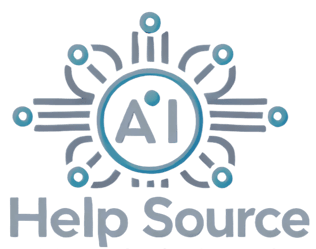Is AI safe to use in the workplace?
Discover how to responsibly integrate AI into your workplace by balancing proprietary models with emerging technologies and implementing local Large Language Models (LLMs) to enhance data privacy and security.
2/14/20252 min read


In today’s rapidly evolving technological landscape, the integration of Artificial Intelligence (AI) into workplace operations offers both unprecedented opportunities and challenges. To harness AI’s potential responsibly, organizations must adopt strategies that ensure safety, privacy, and adaptability.
Ensuring Safe and Ethical AI Deployment
The adoption of AI in professional settings necessitates a robust framework to manage associated risks. The Centers for Disease Control and Prevention (CDC) emphasize five key risk management strategies to promote trustworthy and ethical AI use:
1. Risk Identification: Proactively pinpoint potential AI-related hazards in workplace devices and processes.
2. Risk Assessment: Evaluate the identified risks to understand their potential impact.
3. Risk Control: Implement measures to mitigate or eliminate these risks effectively.
4. Risk Communication: Maintain transparent communication with employees about AI systems and their implications.
5. Risk Monitoring: Continuously observe and adjust AI systems to address emerging risks.
Transparency is paramount; employers should clearly inform workers about the AI systems in use, ensuring that data collection and processing align with ethical standards.
Balancing Proprietary AI Models with Emerging Technologies
Many organizations develop proprietary AI models tailored to their specific needs. While these customized solutions offer advantages, the rapid evolution of AI technologies means newer, more efficient models frequently emerge. To stay competitive, it’s essential to balance the investment in existing AI infrastructure with the integration of cutting-edge advancements. Regularly updating AI systems and fostering a culture of continuous learning can help organizations adapt to technological shifts without compromising stability.
Implementing Local Large Language Models (LLMs) for Data Privacy
For sectors where data sensitivity is critical, deploying Local Large Language Models (LLMs) offers a viable solution. Running LLMs on local hardware ensures that all data processing remains within the organization’s infrastructure, significantly enhancing data privacy and security. To implement local LLMs:
1. Assess Hardware Requirements: Ensure that existing systems have the necessary computational power, particularly adequate GPU capabilities, to support LLM operations.(More info on hardware for AI here)
2. Select Appropriate Models: Choose open-source LLMs that align with organizational needs and can be fine-tuned for specific applications.
3. Install Necessary Dependencies: Set up the required software environments and libraries to facilitate seamless model deployment.
4. Maintain Regular Updates: Keep the models and their dependencies current to leverage improvements and address potential vulnerabilities.
By localizing AI processes, organizations not only bolster data security but also reduce latency and gain greater control over their AI applications.
Fostering a Culture of Continuous Learning and Adaptation
The dynamic nature of AI technology requires both novices and experts to engage in ongoing education. Providing training programs, workshops, and resources ensures that all employees remain informed about the latest AI developments and best practices. Such initiatives empower teams to utilize AI tools effectively, fostering innovation while upholding safety and ethical standards.
In conclusion, the responsible integration of AI into the workplace hinges on a balanced approach that prioritizes safety, embraces technological advancements, and commits to continuous learning. By implementing localized AI solutions and maintaining transparent communication, organizations can navigate the complexities of AI adoption, ensuring benefits for both the company and its workforce.
We're bringing all the information surrounding AI into one location so you don't have to hunt for it.
Support
Links
contact@fastsource.io
© 2025. All rights reserved.
